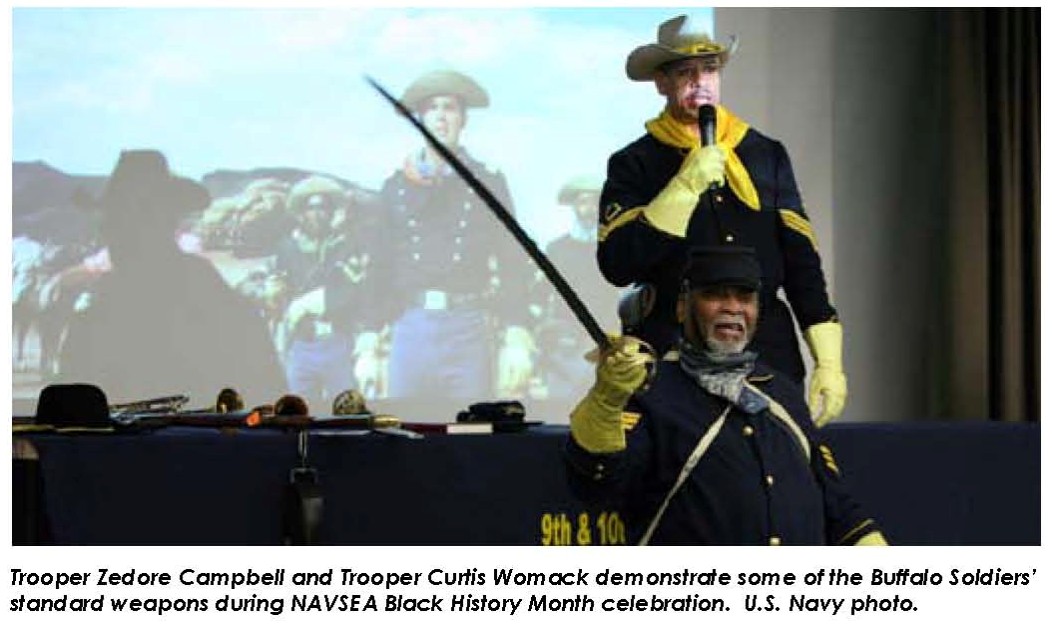Buffalo Soldiers Visit HQ for Black History Month

E ach February, NAVSEA joins the rest of the nation in honoring the culture and contributions of African-American during Black History Month. This year, NAVSEA Commander Vice Adm. Kevin McCoy kicked off the annual observance on Feb. 23 by introducing three “Buffalo Soldiers” and sharing his own personal message of “Passion and Action.”
“The word ‘change’ has taken on a new meaning for many Americans,” said McCoy as he welcomed the audience. “Change is also about obtaining and accruing a diverse workforce for the future with the bright education and skills to lead the 21st century Navy. We are getting there, but we have a long way to go.”
The highlight of the event was a brief history and demonstration by Trooper Zedore Campbell, Trooper Curtis Womack, and Trooper Hardrick Crawford, from the 9th and 10th Horse Cavalry of the Buffalo Soldiers, Washington, D.C.
Nearly 16 months after the end of the Civil War, Section 3 of “An Act to Increase and Fix the Military Peace Establishment of the United States,” authorized the formation of two regiments of cavalry composed of African-American men. The act was approved on July 28, 1866. On Sept. 21, 1866, the 9th Cavalry Regiment was activated at Greenville, La., and the 10th Cavalry Regiment was activated at Fort Leavenworth, Kan.
For more than two decades, the 9th and 10th Cavalry Regiments conducted campaigns against Native American tribes on a Western Frontier that extended from Montana in the Northwest to Texas, New Mexico, and Arizona in the Southwest. These regiments engaged in skirmishes against such great Chiefs as Victorio, Nana and Geronimo.
“Buffalo Soldiers” was the name given to the cavalrymen by the Plains Indians. Reason for the name is uncertain. One belief is that the Native Americans saw a resemblance between the black man’s hair and the mane of a buffalo, while another account is that when a buffalo was wounded or cornered, it fought ferociously, displaying unusual stamina and courage.
When not engaged in combat with Native Americans both regiments built forts and roads, installed telegraph lines, located water holes, escorted wagon trains and cattle drives, rode “shotgun” on stagecoach and mail runs, and protected settlers from renegade Indians, outlaws, and Mexican revolutionaries. Elements of both regiments fought in Cuba during the War with Spain and participated in the famous charge on San Juan Hill. Troopers of the 10th Cavalry Regiment rode with General John J. Pershing during the Punitive Expedition in Mexico in search of Pancho Villa.
In 1941, the two regiments formed the 4th Cavalry Brigade, commanded by General Benjamin O. Davis, Sr., at Camp Funston, Kansas and by 1944 the end had came to horse cavalry regiments.
Following their narrative on the Buffalo Soldiers’ history, the troopers demonstrated some of the mock weapons the cavalrymen typically wielded. Trooper Campbell ended by sharing with the audience some of the decorative, personal items he was wearing that were representative of both Indian and Buffalo Soldier in honor of his African American and Seminole Native American ancestry.